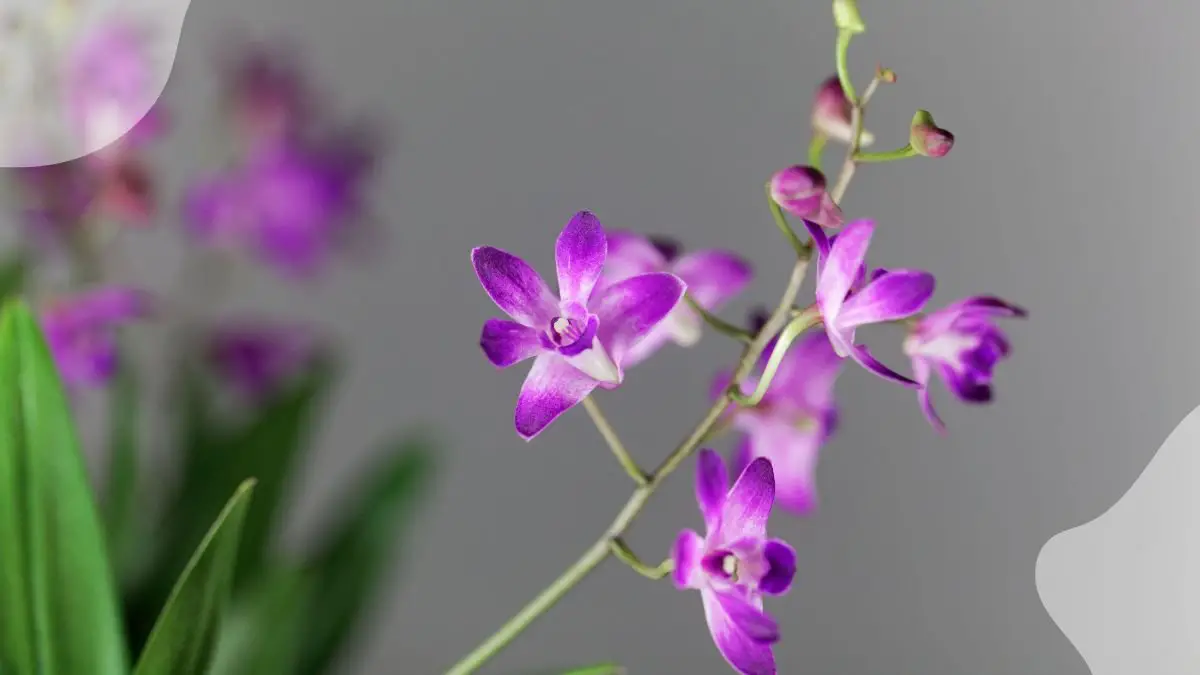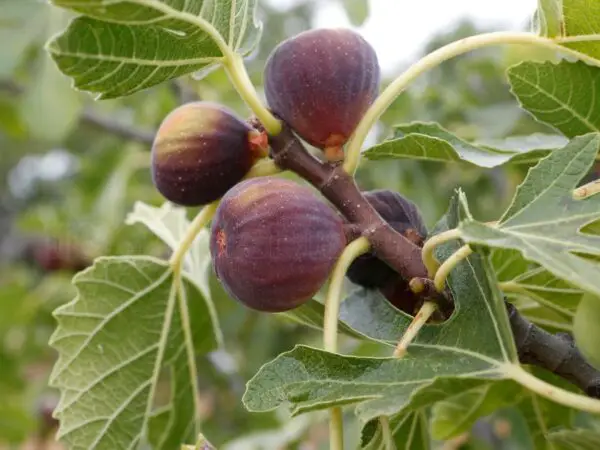Are you eager to elevate your indoor garden with vibrant blooms, tropical orchids, and commercial orchid? Dive into the world of dendrobium orchid plants for a touch of exotic elegance. Discover how these stunning orchids can effortlessly enhance your living space with their captivating beauty and easy-care nature. From their diverse colors and shapes to their resilience in various environments, dendrobium orchids are a perfect choice for both novice and seasoned plant enthusiasts. Unveil the secrets to successfully cultivating these enchanting purple orchid dendrobiums in a pot and witness your home blossom into a botanical paradise.
Key Takeaways
- Provide Proper Drainage: When planting dendrobium orchids, ensure good drainage to prevent root rot.
- Monitor Light and Temperature: Maintain ideal conditions by monitoring light levels and temperature to promote healthy growth.
- Practice Pruning: Use advanced care techniques like pruning to encourage new growth and flowering.
- Address pest infestations Promptly: Troubleshoot common issues by addressing pest infestations promptly to prevent damage to the orchids.
- Use Fertilizers Wisely: Enhance blooms by using fertilizers specifically formulated for orchids to provide essential nutrients.
- Regularly Inspect for Diseases: Keep an eye out for signs of diseases during maintenance routines to catch and treat them early.
Understanding Dendrobium Orchids
Types and Varieties
Dendrobium orchids come in a variety of colors, ranging from vibrant purples to delicate whites. Each species boasts unique characteristics, such as the Dendrobium nobile's cane-like stems or the Dendrobium phalaenopsis' flat leaves. Among the popular varieties are the Dendrobium kingianum with its pink blooms and the Dendrobium anosmum known for its fragrant flowers.
Growth and Blooming Phases
Dendrobium orchids progress through distinct growth stages, starting from seed germination to mature plant development. The blooming process is influenced by factors like light intensity, temperature fluctuations, and proper watering. To ensure abundant blooms, maintain a consistent care routine and provide adequate nutrients during flowering periods.
Ideal Growing Conditions
To cultivate thriving dendrobium orchids, establish an environment that offers the ideal balance of light exposure, temperature levels, and humidity. These plants thrive in bright indirect light, preferring temperatures between 65-85°F during the day and slightly cooler nights. Maintain a humidity level of around 50-70% to mimic their natural habitat and prevent issues like bud blast.
Planting Dendrobium Orchids
Choosing the Right Soil
When planting dendrobium orchids, opt for a well-draining potting medium to prevent waterlogging. The ideal soil mix should provide ample aeration to the roots, promoting healthy growth. Consider mixes containing bark, perlite, and charcoal for optimal drainage.
To ensure the growth of dendrobium orchids, it is crucial to understand the significance of well-draining soil. Waterlogged roots can lead to root rot and other diseases, hindering the plant's overall health. Proper soil composition allows excess water to drain away efficiently.
Explore various options for soil mixes suitable for dendrobium orchids, such as those specifically formulated for epiphytic orchids. These mixes typically contain components like fir bark, sphagnum moss, and perlite to mimic the orchid's natural environment. Experiment with different mixes to find what works best for your orchids.
Light Needs
Determine the optimal lighting conditions for dendrobium orchids by placing them in bright, indirect light. Avoid direct sunlight, especially during the hottest parts of the day, as it can scorch the leaves. Adequate light exposure is essential for robust flowering and growth.
Position your orchids strategically to receive sufficient sunlight throughout the day. East or west-facing windows are ideal locations for providing the right balance of light intensity without causing sunburn. Rotate your plants periodically to ensure even light distribution across all sides.
To ensure healthy growth, avoid common mistakes related to light exposure. Too much direct sunlight can lead to leaf burn, while insufficient light may result in poor blooming and stunted growth. Monitor your orchids closely and adjust their placement accordingly.
Watering Techniques
Mastering the art of watering dendrobium orchids involves finding the right balance between hydration and avoiding waterlogged conditions. Water your orchids thoroughly but allow excess water to drain out completely to prevent root rot. Aim to keep the roots slightly moist but not soggy.
Learning how to water orchids without causing root rot is essential for their long-term health. Allow the top layer of the potting medium to dry out slightly before watering again. Use room temperature water and avoid wetting the leaves to prevent fungal infections.
Understand the watering schedule suited for dendrobium orchids, which typically involves watering once every 5-7 days during active growth periods and reducing frequency during dormancy. Adjust your watering routine based on environmental factors like humidity levels and temperature fluctuations.
Maintaining Ideal Conditions
Temperature and Humidity
Maintain optimal temperature and humidity levels to ensure your dendrobium orchids thrive. Orchids prefer temperatures between 60-85°F, with a drop of 10-15°F at night. Keep humidity levels around 50-70% for ideal growth conditions. Monitor any sudden changes in temperature or humidity to adjust care accordingly.
Fertilizing Schedule
Establish a consistent fertilizing schedule to promote the health of your dendrobium orchids. Use a balanced fertilizer with a ratio like 20-20-20 every other week during the growing season. Apply fertilizer after watering to prevent root burn and ensure nutrient absorption. Balanced nutrition is crucial for vibrant blooms and overall plant vigor.
Advanced Care Techniques
Pruning and Propagating
Prune orchids regularly to encourage new growth and flowering. This process involves removing dead or yellowing leaves and spent flower spikes. By doing so, you redirect the plant's energy towards producing new blooms. To propagate dendrobium orchids, you can use techniques like division or back bulbs. Division entails separating a mature plant into smaller sections, each with roots and new growth. Back bulbs, which are older pseudobulbs, can also be propagated by cutting them into sections with at least one growing point. Learning how to propagate dendrobium orchids successfully can help you expand your collection and share these beautiful plants with others.
Potting and Repotting
Pot your dendrobium orchids in a well-draining medium that allows air circulation around the roots. This helps prevent root rot and promotes healthy growth. When repotting orchids, choose a slightly larger pot to accommodate the growing plant without causing overcrowding. Repotting is crucial for maintaining orchid health as it refreshes the growing medium, eliminates compacted roots, and provides space for new growth. Understanding the significance of repotting will ensure your orchids thrive and continue to bloom abundantly.
Overwintering Care
Prepare your dendrobium orchids for the winter season by gradually reducing watering frequency and fertilization. Cold temperatures can be detrimental to orchids, so it's essential to protect them from drafts and sudden temperature drops. Implement strategies such as moving plants away from windows or using a humidifier to maintain stable indoor conditions. During winter, adjust your care routines to support orchid dormancy by reducing watering and providing adequate light without exposing them to direct sunlight. By following these overwintering care practices, you can help your dendrobium orchids survive the colder months and prepare them for robust growth in spring.
Troubleshooting Common Issues
Pests and Diseases
Dendrobium orchids are susceptible to common pests like aphids, mealybugs, and spider mites. These pests can weaken the plant by feeding on its sap. Look out for sticky residue or webbing on the leaves, which are signs of infestation. To tackle this issue, use insecticidal soap or neem oil to control pests effectively.
When it comes to diseases, orchids can suffer from fungal and bacterial infections. Symptoms include yellowing leaves, black spots, or wilting foliage. To prevent diseases, ensure proper air circulation and avoid overwatering. If your orchid shows signs of disease, remove affected parts and treat with a fungicide.
Yellow and Spotted Leaves
Yellowing and spotting on dendrobium orchid leaves could indicate issues like nutrient deficiencies, overexposure to sunlight, or improper watering. To address these problems, consider adjusting your orchid's environment by providing filtered light, maintaining proper humidity levels, and using a well-balanced orchid fertilizer.
If you notice your orchid's leaves turning yellow or developing spots, it's essential to take action promptly. Trim any damaged areas with sterile tools to prevent the spread of infection. Ensure your orchid is not sitting in waterlogged soil, as this can lead to root rot and leaf discoloration.
Burned and Brown Leaves
Burned and brown leaves on dendrobium orchids are often caused by excessive exposure to direct sunlight or high temperatures. To address this issue, move your orchid to a location with indirect sunlight or provide shade during the hottest parts of the day. Avoid sudden temperature fluctuations, as they can stress the plant and lead to leaf damage.
Factors such as inadequate watering practices or low humidity levels can also contribute to leaf discoloration in orchids. Maintain a consistent watering schedule, allowing the roots to dry out between waterings. Increase humidity by placing a tray of water near your orchid or using a humidifier in the room.
Enhancing Blooms
Getting Orchids to Bloom
To encourage blooms in dendrobium orchids, provide them with the right care and environment. Ensure they receive adequate sunlight, water, and proper ventilation. Trigger flowering by maintaining a consistent watering schedule and using a balanced fertilizer.
Create an optimal environment for your dendrobium orchids by placing them in a location with bright, indirect light. Monitor the temperature to ensure it stays within the ideal range for blooming, typically between 65-75°F during the day and slightly cooler at night. Enhance their blooming potential by providing a humid environment, either through a humidity tray or regular misting.
Reblooming Tips
To encourage reblooming in dendrobium orchids, prune the spikes after the flowers have faded. This encourages the plant to focus its energy on producing new spikes and blooms. Implement techniques such as adjusting the light exposure or temperature fluctuations to stimulate multiple blooming cycles throughout the year.
Discover tips for consistent and prolonged flowering by maintaining a regular fertilizing schedule during the growing season. Use a high-phosphorus fertilizer to promote blooming. Consider repotting your dendrobium orchids every 2-3 years to refresh the growing medium and provide essential nutrients for continuous flowering.
Final Remarks
You now possess a wealth of knowledge on caring for dendrobium orchids, from planting to troubleshooting common issues. By understanding their needs and following the tips provided, you're well-equipped to ensure your orchids thrive. Remember, consistency is key in maintaining ideal conditions and implementing advanced care techniques to enhance blooms.
Take the time to observe your dendrobium orchids closely, adjusting care as needed. Your dedication will be rewarded with stunning, vibrant blooms that bring joy and beauty to your space. Keep honing your skills, and don't hesitate to seek further advice or resources to deepen your orchid care expertise.
Frequently Asked Questions
How do I plant Dendrobium orchids?
To plant Dendrobium orchids, use a well-draining potting mix, place the orchid in a pot with good drainage holes, position it in bright indirect light, and water sparingly. Allow the roots to breathe and avoid overwatering.
What are the ideal conditions for Dendrobium orchids?
Dendrobium orchids thrive in warm temperatures between 65-85°F during the day and slightly cooler at night. They require high humidity levels of around 50-70%, bright indirect light, good air circulation, and protection from direct sunlight.
How can I enhance blooming in my Dendrobium orchids?
To enhance blooming in Dendrobium orchids, provide them with a slight drop in temperature at night, reduce watering to induce a slight drought period, ensure they receive adequate sunlight, fertilize with a balanced orchid fertilizer, and maintain proper air circulation.
What advanced care techniques can be used for Dendrobium orchids?
Advanced care techniques for Dendrobium orchids include adjusting temperature fluctuations to stimulate blooming, providing specific nutrient ratios during growth stages, implementing controlled drought periods to trigger flowering, and using specialized techniques like backbulb propagation for propagation purposes.
How can I troubleshoot common issues with my Dendrobium orchids?
Common issues with Dendrobium orchids include yellowing leaves due to overwatering, lack of blooms from insufficient light or incorrect temperature conditions, pests like spider mites or aphids, and root rot from poor drainage. Address these issues promptly by adjusting care practices accordingly.
Image Source: Paid image from CANVA





